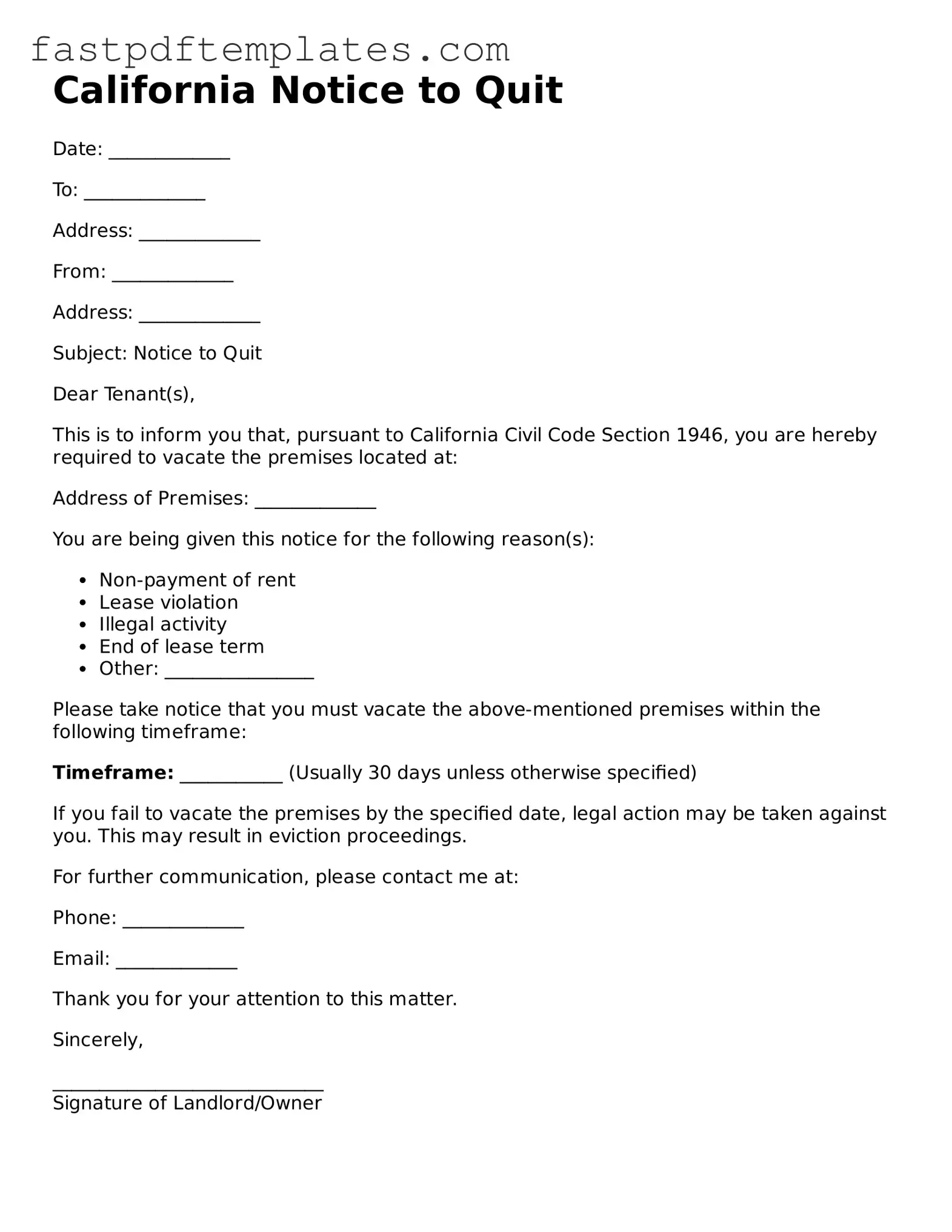California Notice to Quit
Date: _____________
To: _____________
Address: _____________
From: _____________
Address: _____________
Subject: Notice to Quit
Dear Tenant(s),
This is to inform you that, pursuant to California Civil Code Section 1946, you are hereby required to vacate the premises located at:
Address of Premises: _____________
You are being given this notice for the following reason(s):
- Non-payment of rent
- Lease violation
- Illegal activity
- End of lease term
- Other: ________________
Please take notice that you must vacate the above-mentioned premises within the following timeframe:
Timeframe: ___________ (Usually 30 days unless otherwise specified)
If you fail to vacate the premises by the specified date, legal action may be taken against you. This may result in eviction proceedings.
For further communication, please contact me at:
Phone: _____________
Email: _____________
Thank you for your attention to this matter.
Sincerely,
_____________________________
Signature of Landlord/Owner
